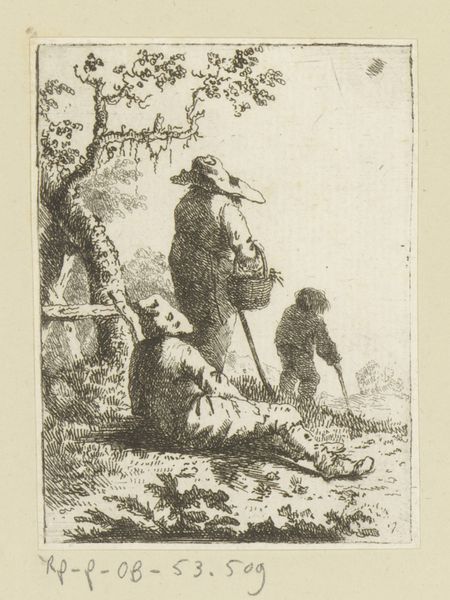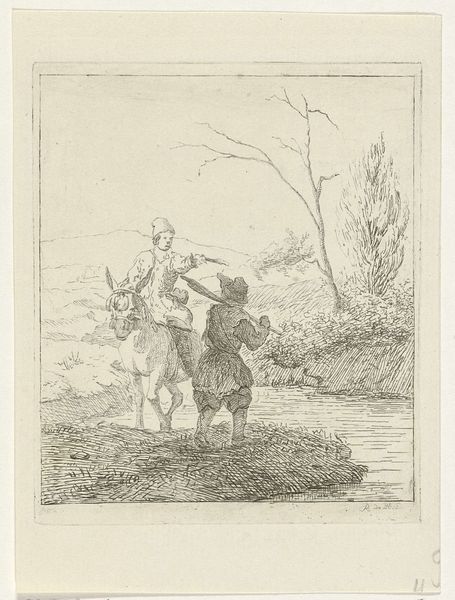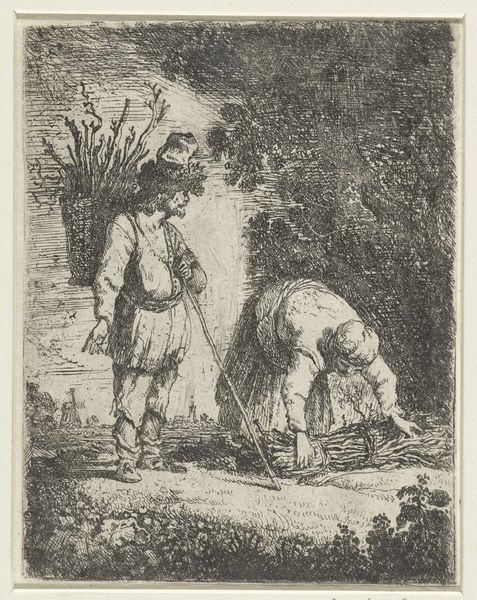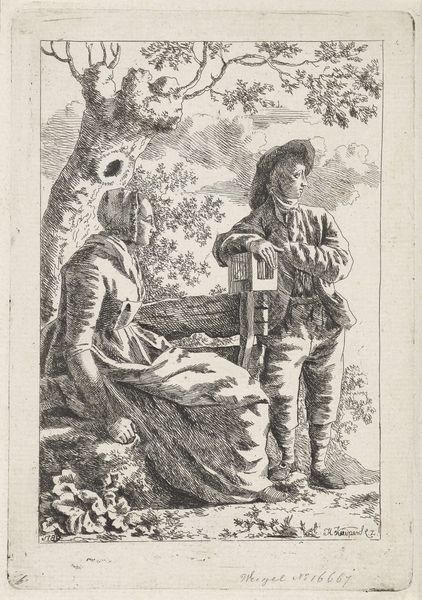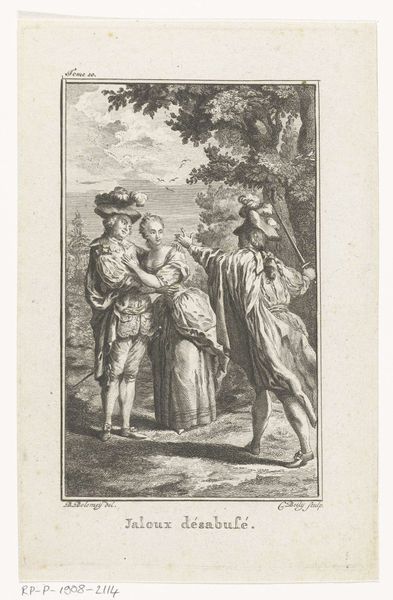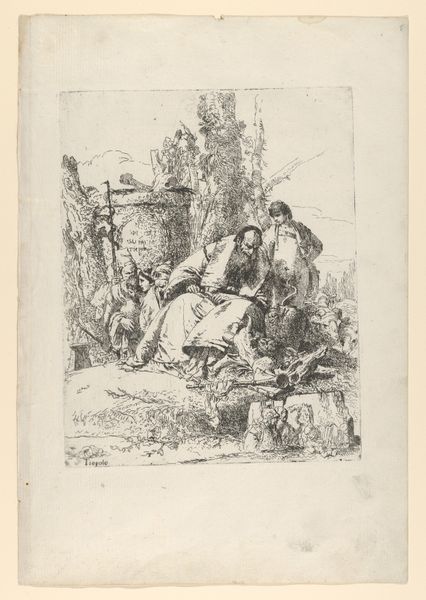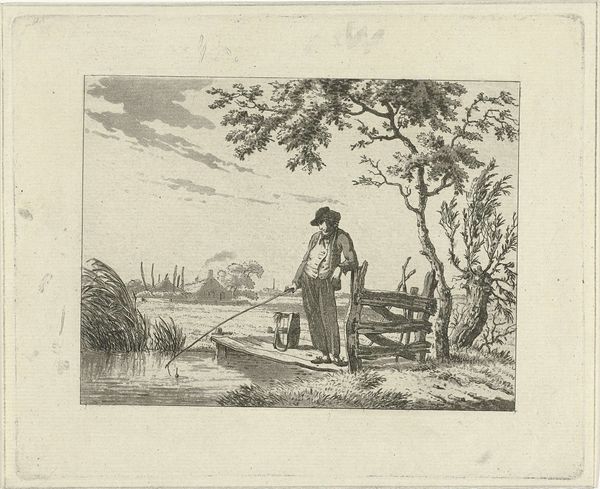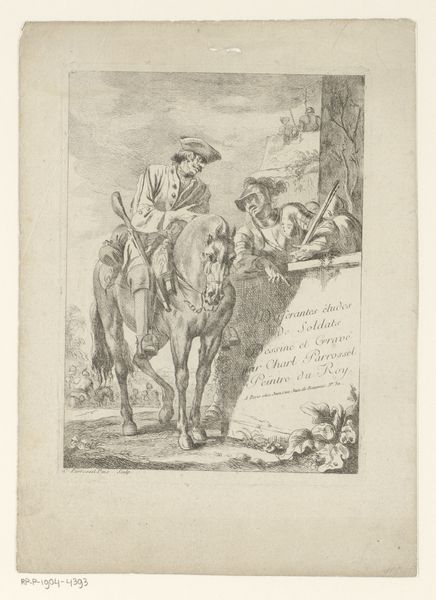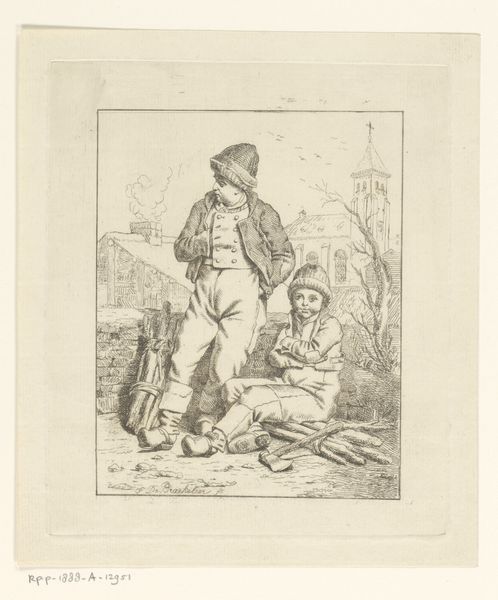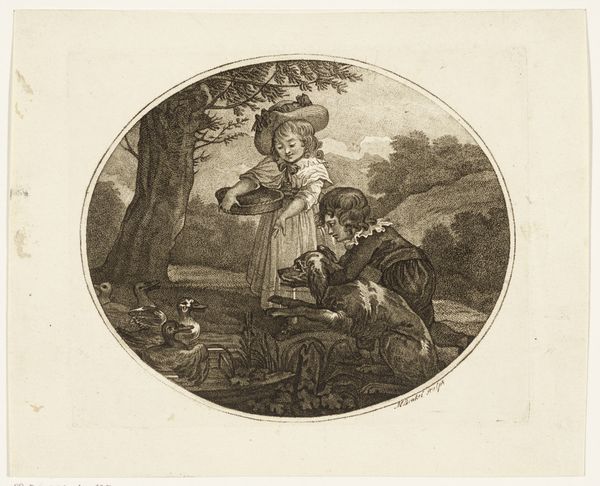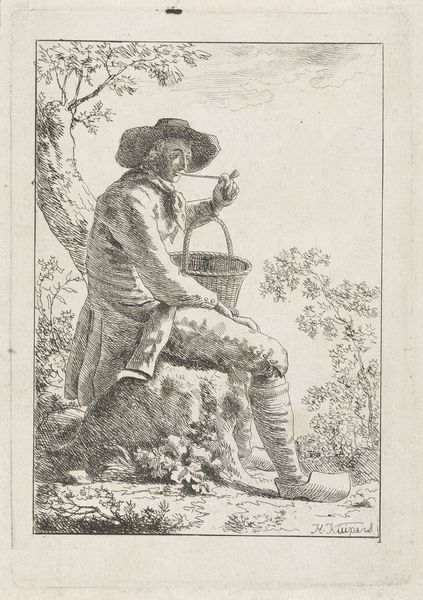
drawing, print, etching
#
drawing
#
narrative-art
# print
#
etching
#
landscape
#
figuration
#
romanticism
Dimensions: Sheet: 4 1/2 × 3 3/4 in. (11.5 × 9.6 cm)
Copyright: Public Domain
Curator: Here we have Alexandre-Gabriel Decamps's etching from the late 1830s, aptly titled "A Beggar," held at the Metropolitan Museum. It is a deeply romantic landscape study. Editor: Oh, wow, instantly the mood strikes me—it feels desolate and solitary. The man almost blends with the countryside around him, doesn't he? All browns and grays. A little bleak, maybe, but interesting. Curator: Interesting indeed. The monochromatic palette allows the viewer to focus on the formal elements. Notice how the dense cross-hatching creates a strong sense of texture. See also how the figure is positioned within the pictorial space, framed by the stark verticals and horizontals of the gate and distant buildings, all under the looming sky. The structural rigidity plays against the transience of his journey. Editor: Absolutely! The figure's stooped posture and tired stance seem to speak to a burden much heavier than just his bag, a profound loneliness perhaps? What do you think? It's funny, there's almost a feeling he's passing between worlds; he could disappear into the ground itself! And is that his dog slumped there, mirroring his master’s dejection? Curator: I interpret the animal more as an indicator of a shared existence rather than a simple doubling of emotion. The Romanticists often used animal depictions to speak of raw, instinctual existence as it plays off man's higher form of civilization. Look, too, at the almost symbolic use of shadow and light, creating tonal drama that underscores the psychological weightiness of the scene. Editor: Well said. So, if we consider Romanticism's preoccupation with emotion, with landscape as metaphor…does this beggar, with his weary dog and threadbare clothes, embody the hardships and inequalities of early 19th century France? I wonder if the artist intends him as more of a comment than a straightforward record? Curator: Perhaps both? Decamps cleverly uses genre conventions to articulate the complex social realities. The artist evokes both observation and poetic resonance through this single scene. The rigorous application of aquatint in areas is not just illustrative but deeply expressive. Editor: Makes you wonder about his story. I’m left contemplating both the exquisite skill, the line work— but also, really, I think more about how a human becomes so utterly forlorn. Haunting! Curator: Quite right. It's a perfect example of Romanticism’s powerful blend of artistry and social critique, compelling viewers even today to examine both their world and the artist’s world around them with new clarity.
Comments
No comments
Be the first to comment and join the conversation on the ultimate creative platform.

